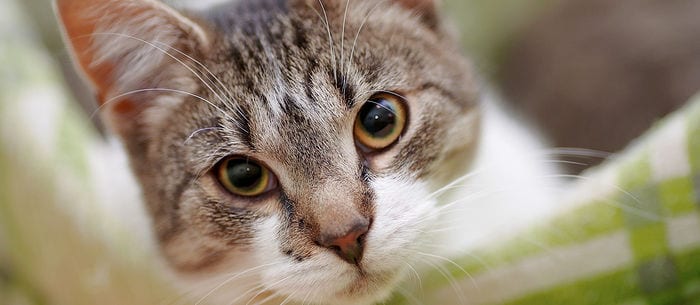If your cat is shaking its head or rubbing its ears excessively, or you notice what looks like coffee grounds in your cat’s ears? Cat ear mites may be the culprit. “In more extreme cases, your cat may begin losing fur around its ears from excessive scratching,”says Dr. Bruce Kornreich, the associate director of the Cornell Feline Health Center, “As the infection progresses, your cat may have a black or brownish secretion from the ear.” So those “coffee grounds” might not be your first clue.
How Do You Know if Your Cat Has Ear Mites?
So what are ear mites exactly? “They are tiny, eight-legged parasites that live in the ear canals of cats,” explains Dr. Camille DeClementi, a veterinarian and toxicologist for the American Society for the Prevention of Cruelty to Animals (ASPCA). “They feed on the wax and oils that occur naturally in the ear canal.” A cat with ear mites has itchy ears.
If you notice the behaviors such as head shaking or rubbing of the ears, Dr. Kornreich advises scheduling an appointment with your veterinarian. “The only way to diagnose ear mites is for your veterinarian to take a swab on the discharge inside the ears and look at the discharge under a microscope for the mites,” says Dr. DeClementi. She cautions cat owners against “trying to make this diagnosis without the assistance of a veterinarian since certain types of bacterial ear infections can look like ear mites.”
Left untreated, she says, “ear mites or bacterial infections can cause a rupture of the ear drum and more serious problems.” It’s best to seek help sooner than later. Ear mites are incredibly contagious, so multi-pet owners should be aware of the signs and symptoms to watch for in their other pets and to try to keep the pets separated.
Treatment and Prevention
According to Dr. Kornreich the most common treatment for cat ear mites is with a topical solution applied directly to the ear, but there are other medications available that are applied directly to the skin and absorbed into the bloodstream. A veterinarian will decide on the best product to use depending on how frequently the owner can provide the medication, how severe the case is and if there is also a bacterial infection or ruptured ear drum.
Because the mites feed on the wax in the cat’s ear canal, keep your cat’s ears clean. Dr. Kornreich suggests regularly checking and cleaning your cat’s ears, as well as thoroughly cleaning cat bedding as a means of containing ear mite exposure, particularly in a multi-cat household since cats commonly pick up ear mites when with other cats. Use a cotton ball or soft gauze to gently rub the cat’s ears. For a lot of wax, apply a few drops of a cat ear cleaning solution. Dr. DeClementi recommends that owners treat all pets in their home if any of them have ear mites. “Outside cats seem to be more likely to catch ear mites, so keeping your cat inside may avoid infection,” she says.
Tips for Cat Sitters
If you notice any of the symptoms cited above, be sure to discuss the situation with your cat sitter (or let a cat owner know if you’re caring for a cat in an owner’s absence). Dr. Kornreich advises sitters to carefully monitor other cats in the household, in addition to following the veterinarian’s directions regarding therapy through to completion. “Sitters should carefully monitor the affected cat even after the care has completed,” he says.
Lauren Stevens has owned cats her entire life and has ministered to many an ear mite infection. Lauren’s husband, also a cat lover, saved her from a life as a “cat lady.” They currently reside in Philadelphia with their three-year-old son


